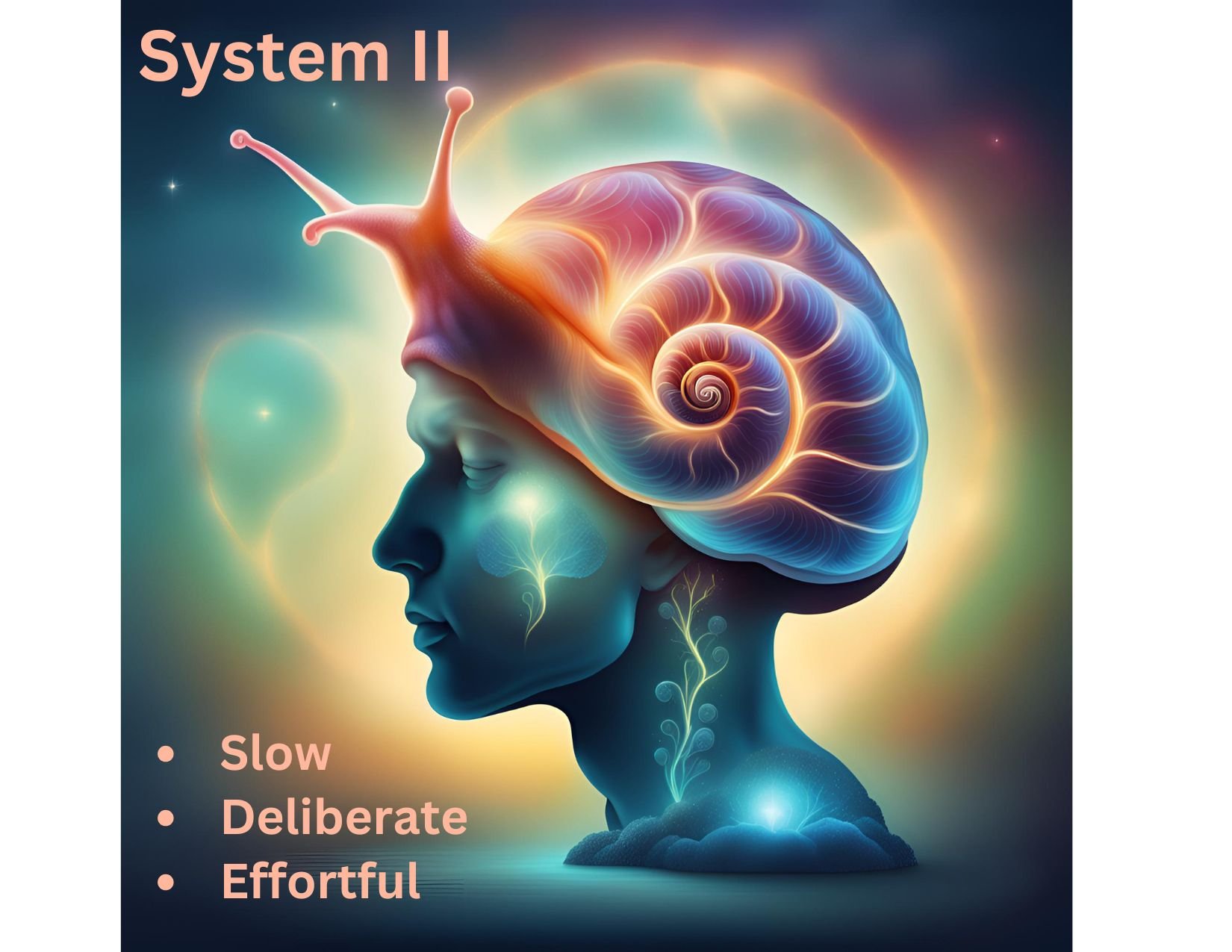Automatic Versus Effortful Thinking
Have you ever found yourself engaging in certain thoughts or behaviors that impede or reduce your well-being? For instance, how often do we find ourselves mindlessly watching TV or endlessly scrolling through our smartphones, even when we know we could be cooking dinner, exercising, or meeting up with friends? Sometimes, we might spend a lot of time worrying about how other people perceive us, even when there is little evidence for our negative assumptions. Maybe you have felt some nagging frustration that these patterns are difficult to break (See my blog post on the Essential Elements of Habit Change.).
While some of these unwanted patterns are physical, the most insidious often involve repeated thoughts you just can't seem to shake—like that terrible song stuck on repeat in your head. These kinds of patterns can lead to emotional distress or a sense of being trapped. What is going on in our minds when we get stuck like this? Understanding the concept of dual process models of cognition, specifically the interplay between automatic and effortful thinking, can reveal why these patterns persist and how psychotherapy can play a helpful role for many people (Evans, 2008; Kahneman, 2011; Strack & Deutsch, 2004; Westen, 2007). In this post, I will explore automatic and effortful thinking, the implications for mental and emotional well-being, and how they can be treated in therapy.
The Dual Process Model of Human Thinking
Dual process models of cognition propose that human thinking and decision-making involve two distinct processes: automatic thinking and effortful thinking. Automatic thinking refers to cognitive processes that are fast, unconscious, and intuitive. Scientists believe that it is built into evolutionarily older structures of the human brain. These structures permitted our ancestors to quickly perceive resources in the environment and to avoid threats when daily survival was a frequent preoccupation. It operates on heuristics, biases, and associations developed through prior experiences and social conditioning (Evans, 2008; Kahneman, 2011).
Effortful thinking, on the other hand, is deliberate, conscious, and requires mental effort. It is generally assumed to derive from evolutionarily newer parts of the human brain that permit us to use symbols and language to represent and to communicate ideas. It involves logical reasoning, accurate perception, effective planning, good memory storage, and the ability to override automatic responses (Evans, 2008; Kahneman, 2011; Strack & Deutsch, 2004). This part of the brain might have more sophisticated wiring, but it grants slower firing of mental signals. It is also more prone to fatigue and needs time to recharge in between episodes of high performance.
The Impact on Mental Health
Many people who come to counseling seek help because they experience feeling trapped or stuck in unhelpful patterns of thinking, feeling, or behaving. Often, these patterns are a result of automatic thinking that is deeply embedded and functions outside of our conscious awareness. Do you often find yourself employing negative self-talk, sabotaging yourself through your own behaviors, or repeating harmful relationship dynamics while not understanding why? Automatic thinking can impede personal development and result in emotional distress, causing many of us to struggle with breaking out of the traps in our everyday lives (Evans, 2008; Westen, 2007).
The Role of Psychotherapy
Psychotherapy provides a chance for you to gain insight into your automatic thinking patterns and to develop strategies to engage in more effortful thinking. Through therapeutic interventions, you can become aware of your automatic thoughts, beliefs, and emotional responses. This process of self-reflection and introspection allows you to identify how your automatic thinking may be contributing to your current difficulties (Evans, 2008; Westen, 2007). For instance, if your automatic thought is “I’m not good enough,” therapy could help you to understand that your situation is not about being good or bad, but it’s about being a person who is learning and growing.
Various evidence-based approaches can help you to navigate the interplay between automatic and effortful thinking.
Cognitive-behavioral therapy (CBT) focuses on identifying and challenging automatic negative thoughts and replacing them with ones more grounded in logic and evidence (Evans, 2008).
Mindfulness-based treatment promotes here-and-now awareness, enabling you to observe your automatic thoughts as they unfold, expanding your ability to take immediate corrective action (Kahneman, 2011).
Psychodynamic therapies explore the unconscious roots of automatic thinking patterns, providing insight into their origins—often from childhood development and early experiences—and then facilitating change (Westen, 2007).
The Importance of Effortful Thinking
Effortful thinking requires conscious intention and practice. You can benefit from psychotherapy by learning techniques to engage in more effortful thinking in your daily life. This will likely involve setting aside time for practicing thought restructuring activities, engaging in self-reflection, or journaling. Given enough practice and time, you can develop a greater sense of efficacy and control over your personal thought and behavior patterns (Evans, 2008; Kahneman, 2011).
Conclusion
Understanding the difference between automatic and effortful thinking can provide valuable insights into why you might feel stuck or emotionally distressed. By identifying automatic thought patterns and practicing intentional thinking, you can break free from many traps in your life and make meaningful changes. Psychotherapy serves as a supportive space to explore your thinking patterns, to gain insight, and to develop strategies to promote well-being, better coping, and personal development (Evans, 2008; Kahneman, 2011; Westen, 2007).
"Yesterday I was clever, so I wanted to change the world. Today I am wise, so I am changing myself." --Rumi
References
Evans, J. S. B. (2008). Dual-processing accounts of reasoning, judgment, and social cognition. Annual Review of Psychology, 59, 255-278.
Kahneman, D. (2011). Thinking, fast and slow. Farrar, Straus and Giroux.
Strack, F., & Deutsch, R. (2004). Reflective and impulsive determinants of social behavior. Personality and Social Psychology Review, 8(3), 220-247.
Westen, D. (2007). The scientific legacy of Sigmund Freud: Toward a psychodynamically informed psychological science. Psychological Bulletin, 133(5), 729-763.



